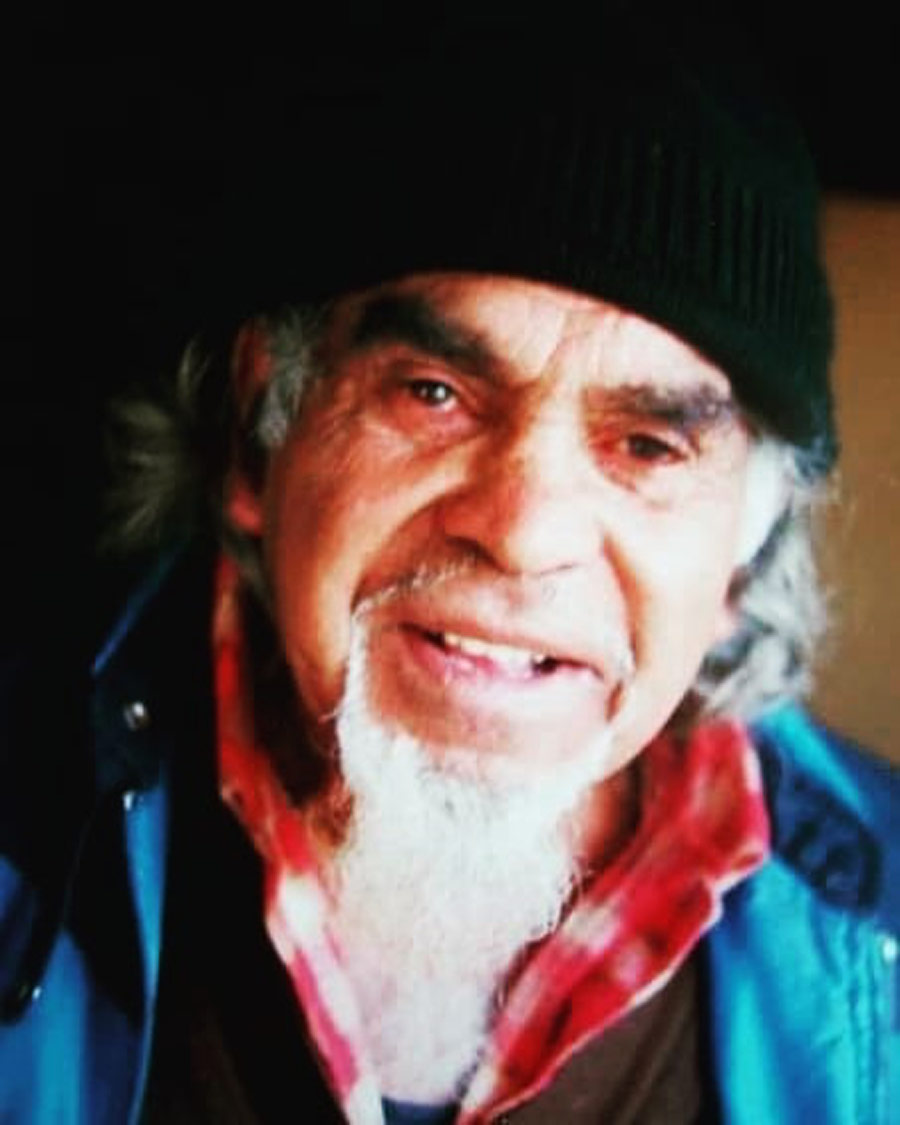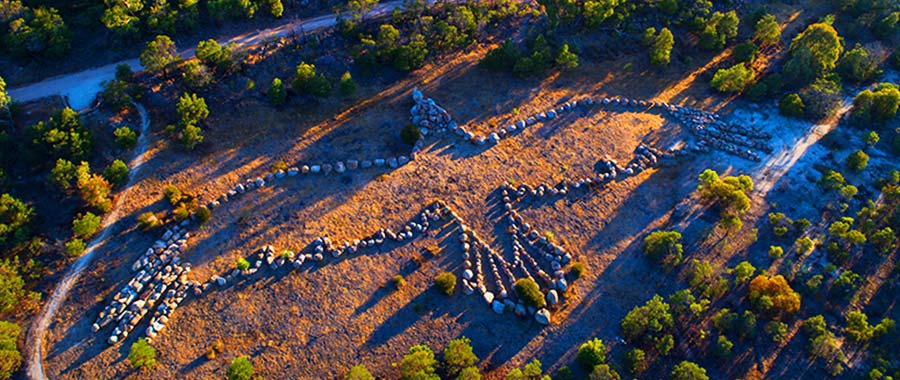The views expressed in our content reflect individual perspectives and do not represent the authoritative views of the Baha'i Faith.
On the wings of the royal Falcon, I caught a glimpse of the Aboriginal Eagle—and I beheld the relationship of those two great birds. Let me tell you what I saw.
In the previous essay in this series, we met Banjo Clarke—an Australian Aboriginal elder—and his autobiography, Wisdom Man, dedicated “To the future of my people.”

Banjo Clarke
We also learned about “Bunjil,” the creator deity of Banjo Clarke’s sacred Aboriginal tradition. Bunjil, known as a sky-being, is similar to other Aboriginal spiritual Messengers Daramulan and Baiame. Bunjil is a common Aboriginal title of respect for the wise, which may be freely rendered as “Elder.” Thus Banjo Clarke can also be understood as Bunjil or Elder Clarke.
Personally, though, I claim absolutely no expertise on Australian Aboriginal sacred traditions. I am an outsider, looking in. That said, I have gotten a glimpse of the great beauty of those traditions and their relationship to the radiance of the Baha’i teachings, so I hope this essay will inspire Aboriginal people and others to explore any and all connections, resonances, harmonics as well as differences between Aboriginal spirituality and Baha’i beliefs. Like all of the world’s true Faiths and belief systems, they are connected—they each encourage us to soar in “the unbounded realm:”
The mass of the people are occupied with self and worldly desire, are immersed in the ocean of the nether world and are captives of the world of nature, save those souls who have been freed from the chains and fetters of the material world and, like unto swift-flying birds, are soaring in this unbounded realm. They are awake and vigilant, they shun the obscurity of the world of nature, their highest wish centereth on the eradication from among men of the struggle for existence, the shining forth of the spirituality and the love of the realm on high, the exercise of utmost kindness among peoples, the realization of an intimate and close connection between religions and the practice of the ideal of self-sacrifice. Then will the world of humanity be transformed into the Kingdom of God. – Abdu’l-Baha, Selections from the Writings of Abdu’l-Baha, pp. 281-282.
If you visit the Aboriginal Cultural Center of the Melbourne Museum in Carlton, Victoria, Australia, you’ll meet Bunjil at an exhibit called “Bunjil the eagle is our creator” a video of an installation that features the “Flight of Bunjil”—a “kinetic sculpture.” This fascinating exhibit demonstrates how the sacred figure of Bunjil the eagle—symbolizing all sacred Aboriginal wisdom and knowledge—now inhabits, or enchants, the popular culture of Australia, as the several graphics displayed here demonstrate.
To a certain extent, this represents the growing appreciation for all things Indigenous in Australia. Given this recognition of sacred Aboriginal tradition by way of an educational, contemporary museum cultural exhibit, it is neither far-fetched, nor a stretch of the imagination, for us to appreciate what this sacred tradition has to offer—as well to acknowledge and respect the many resonances between Bunjil and Baha’u’llah. Consider the following passage from the Baha’i teachings:
The Great Being saith: The Tongue of Wisdom proclaimeth: He that hath Me not is bereft of all things. Turn ye away from all that is on earth and seek none else but Me. I am the Sun of Wisdom and the Ocean of Knowledge. I cheer the faint and revive the dead. I am the guiding Light that illumineth the way. I am the royal Falcon on the arm of the Almighty. I unfold the drooping wings of every broken bird and start it on its flight. – Baha’u’llah, Tablets of Baha’u’llah, p. 169.
Here, Baha’u’llah is symbolized by the royal Falcon, the noble, soaring spirit of the age. In a very similar way, Bunjil becomes the ancestral wedge-tailed eagle. Sacred Aboriginal traditions about Bunjil, the Creator, provide meaning, spiritual identity and a moral compass for the Aboriginal peoples of southeastern Australia. Local Aboriginals attribute the invention of their arts and crafts and institution of their social organization to Bunjil, who is more often spoken of, and invoked, as “Our Father.”
If you want to view an original depiction, go to Bunjil’s Shelter, formerly known as “Bunjil’s Cave,” in the Black Range Scenic Reserve, near Stawell, in Victoria, Australia. In late 1981, the Aboriginal origin of the site was scientifically established by scanning electron microscopy analysis. This sacred site features Aboriginal rock art, with a red-and-white painting of Bunjil, the “Eaglehawk,” depicted in a human form rather than as a bird of prey. This is the only ancient rock-art painting of Bunjil now known.
Then, listen with your heart to this sacred song, an Aboriginal dirge said to be inspired by Bunjil:
Wenberi’s Song
We go all!
The bones of all
Are shining white.
In this Dulur land!
The rushing noise
Of Bunjil, Our Father,
Sings in my breast.
This breast of mine
It is said that the spirit of Bunjil enters the heart of the singer who performs this sacred song. Bunjil, then, represents wisdom and knowledge, just as every divine Prophet and Messenger does:
Bunjil was the sky-being for the Kulin nation and the Wotjobaluk in Western Victoria. Bunjil meant eagle-hawk and was considered an old, benign father of all the people, who had two wives and a son by the name of Binbeal, who was the rainbow. He lived on earth but moved to the sky in a whirlwind where he has been ever since, watching the Kulin. … He was the creator of the earth, trees, and men, and his name stood for wisdom or knowledge. Before he went to live in the sky, Bunjil taught men the use of nets, canoes, and weapons. This emerging differentiation between the human and the environment and the objectification of order in the human alone is also typical of sky-beings in other districts of South-East Australia. – Hans Mol, The Firm and the Formless: Religion and Identity in Aboriginal Australia, pp. 18–19.
Of course, when we learn about these sacred spiritual traditions, we have to distinguish between respect and belief. Aboriginal sacred traditions should be respected, even honored, but not necessarily believed, disbelieved or culturally appropriated, since they were meant for a particular Indigenous group at a particular time. Given that understanding, which the Baha’i teachings clarify, we can each discover, recognize and respect the wisdom and beauty in every spiritual tradition, and thereby realize their interconnected oneness:
From the days of Adam until today, the religions of God have been made manifest, one following the other, and each one of them fulfilled its due function, revived mankind, and provided education and enlightenment. They freed the people from the darkness of the world of nature and ushered them into the brightness of the Kingdom. As each succeeding Faith and Law became revealed it remained for some centuries a richly fruitful tree and to it was committed the happiness of humankind. – Abdu’l-Baha, Selections from the Writings of Abdu’l-Baha, p. 51.
















Comments
Sign in or create an account
Continue with Googleor